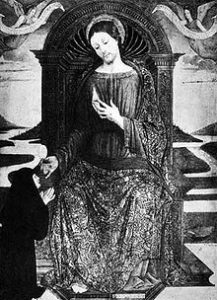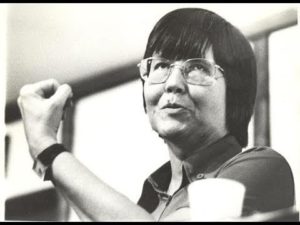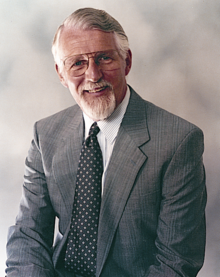Reading Time: 14 minutes
How should we use gender to talk about God?
Summary:
- Three main approaches to using gender to talk about God: progressive/feminist, gender neutral, traditional masculine approach.
- Progressive/feminist argues that we need to expand our vocabulary beyond the Bible’s male-centered language of God the Father and God our Lord.
- Gender-neutral argues that we do away with pronouns that are gender-specific, and use inclusive language for God.
- Traditional view defends the idea of Scripture having the last word. If Scripture primarily says God is Father and Lord, then we should not challenge that.

Source: The Shack Movie
The movie adaptation of William P. Young’s The Shack hit theaters in March 2016, and created quite a bit of controversy. But even before the silver screen found it, Young’s book had readers talking. Though the story is fiction, it confronts heavy, real-life things: a father whose daughter is murdered and whose faith is fading because of it.
However jarring that storyline is, it’s actually not the plot development that inspires all the heated conversations. It is Young’s depiction of God. At the story’s climax, the father meets the Trinity in a shack where his daughter died, and has a conversation with each of them. Jesus is a young Middle-eastern Jewish man; the Holy Spirit, a slender and soft-spoken Asian woman. And God the Father? She is a black woman.
Young’s portrayal of God draws from his personal spiritual encounters. He told one interviewer that during a difficult season in his marriage and career, the worship leader at his church (a black woman) visited his house to say, “I don’t care what the rest of them do, I’m committed to you and [your wife], and I’m going to be your friends through this.” (Washington Post) Her kindness and friendship became Young’s inspiration for the God of The Shack.
While many Christians would say they have seen God revealed in a friend, child, or spouse, it is an entirely different matter to portray the fullness of God as that person. But Young wanted a God to inhabit The Shack that was personal and close, nurturing and gentle. He wanted his characters to encounter the feminine and gentle aspects of God, and see God as Mother.
This position does not sit well with many. Most people are used to a God with male characteristics. And although we believe in a God who is infinite and outside of human limitations like time and space, this kind of God is really difficult to articulate. God is not human as we are; God is God; thereby meaning God does not have a gender of male or female. It is nearly impossible for language, which constantly requires us to qualify and categorize, to be comprehensive enough to fully describe God’s character. So, we often fall back on metaphors and analogies; throughout history, the majority of those have been masculine (e.g. Father, Lord, Protector, and Fortress) The way we talk and the words we use were originally created by humans who were as finite, flawed, and imperfect as we are. So when using these words to describe the Creator and catalyst of life itself, they just don’t cut it; we are literally at a loss for words. But this is the Bible’s task – to use mere words to explain a vast, indescribable God. But pronouns like he, she, and it are part of the problem.
Because of the shortfalls of language, there is an ongoing tension between the uncreated, transcendent character that we attribute to God and the words we use to make sense of Him (case in point).
The majority of the Bible refers to God as “He” and “Him”, assigning Him attributes like strength and power and authority that have been historically associated with masculinity. Especially for females, it can be alienating to worship a God that is almost always Father and King, and hardly ever Mother or Queen. A masculine God, described by an entirely male authorship, makes many Christian thinkers skeptical for good reason. Both male and female theologians have been asking for centuries, “Is it problematic that the Church and the Bible refer to God as ‘He’?”
Although the majority of the Bible refers to God in masculine terms, there are some verses that talk about God as a mother. Here’s a few examples:
- “As a mother comforts her child, so I will comfort you; you shall be comforted in Jerusalem.” (Isaiah 66:13)
- “Yet it was I who taught Ephraim to walk, I who took them up in my arms; but they did not know that I healed them. I led them with cords of human kindness, with bands of love. I was to them like those who lift infants to their cheeks. I bent down to them and fed them.
- (Hosea 11:3-4)“You were unmindful of the Rock that bore you; you forgot the God who gave you birth.” (Deuteronomy 32:18)
We’ll summarize three approaches Christians have taken in the past to decide how to use gender to talk about God:
- Thinkers like Julian of Norwich and Mary Daly use their writing to resist the male-centered language of the Bible and the masculinity that’s traditionally assigned to God.
- Other theologians take a gender-neutral approach, seeking to replace gender-specific pronouns and names with words that highlight God’s character rather than sex.
- Still, the majority of churches and Christian thinkers today defend the traditional Biblical portrayal of God as the Father.
A look at these three approaches to talking about God only scratches the surface: this question has been asked for centuries, and answered in lots of different ways.
APPROACH 1: CRITIQUING THE BIBLE’S TRADITIONAL MAN-CENTERED LANGUAGE
Julian of Norwich

Julia of Norwich, Source: Wikiquote
14th century Christian mystic Julian of Norwich spent much of her writing doing just that. She was an English anchoress, a kind of hermit who withdraws from secular society in order to live an ascetic life devoted to prayer and Scripture reading. At the end of her life, she wrote Revelations of Divine Love, which is considered to be the first book in the English language written by a woman. The title is self-revealing – her book is a series of messages and visions that God sent her about His love, goodness, and character. Her style of writing makes readers feel included, allowing them to be a part of these revelations of divine love from God. Interestingly, there is not a lot of content in Revelations of Divine Love that was born in Julian’s intellect. Rather, she acts as a translator – relaying what God told her instead of expressing her own ideas or philosophies. So it is striking when she says, “Just as God is our Father, so God is also our Mother.” It is not presented as if she has thought this up herself, but as if God revealed that to her directly.
On top of that, her construction of the Trinity includes Father, Mother, and Holy Ghost, and at many different points in the book, she calls Jesus “our precious Mother.” Though she is not the first to explore the femininity of God, Julian’s writings on the topic have earned respect and recognition in Christian circles for their eloquent, poignant character. Her logic here is based in the Five Holy Wounds (the nail piercings in both feet and both hands as well as the side wound that the Bible says the Roman guards inflicted to make sure He was dead). Scholars in the Middle Ages argued that the fifth wound, which pierced Jesus’s side, reached Christ’s heart and gaped open like a womb. This tradition of Christian thought is meant to emphasize the rebirth that the cross allowed for believers; for Julian, this distinctly motherly element of Jesus’s suffering was consequential. On the cross, it was Jesus our precious Mother who labored in our place, bore our sins, and gave us new life.
Though this kind of theology might seem shockingly progressive, God as feminine was a fairly well-received concept in the Middle Ages: there are traces of it in both art and literature of the time. (source: Bledsoe, Jenny. “Feminine Images of Jesus: Later Medieval Christology and the Devaluation of the Feminine.” pg. 40)

Christ Showing His Wounds and the Host to a Clarissan Nun, Quirizio di Giovanni da Murano, Source: Wikipedia
Julian probably did not reject the Bible’s masculine portrayal of God; she never wrote anything that was forcefully feminist. But she did believe in a broader, more comprehensive envisioning of God, who is not only Father but who is also Mother. The God she revered and wrote about was transcendent, holy, and not subject to the limitations of gender. Male and female were both created in His image, which means that both masculine and feminine qualities can be reflections of God’s character.
Readers of Revelations of Divine Love do not discover just a feminine vision of God, though. Julian of Norwich specifically emphasizes the characteristics of God that are motherly. She is not saying God is intrinsically female (for that would only swing the pendulum of gender-exclusive God talk toward a different bias), but that God’s character is nurturing and tender in the particular ways that mothers often exhibit. After all, God was the One who did the programming “to His own image” (Genesis 1:27), and so has the propensity to exhibit those traits that originated in Him.
It’s admittedly tricky to talk about God as Mother, then use language like “His” and “Him” to flesh out the idea. Julian recognizes this tension and doesn’t avoid it, using both feminine and masculine pronouns to convey the content of Revelations of Divine Love. She is less interested in uniformity of language, and much more passionate about the broadening of Christian thought to see God in the entirety of who He/She is – which is, of course, beyond our comprehension, but still worth our pursuit.
Mary Daly

Mary Daly
Mary Daly’s work was based in the same desire that Julian of Norwich had to move beyond the traditional masculine Godtalk (Godtalk is a phrase Daly uses, and it implies conversations about God’s nature specifically, as opposed to “talk of God”, which is just generally describing any mention of God.). With the publication of her second book, Beyond God the Father, Daly earned a reputation for spearheading the Christian feminist movement of the mid-20th century. While she taught at Boston College, she was known for her attempts to keep male students out of her feminist theology classes.
In Beyond God the Father, Daly famously writes, “If God is male, then male is God.” This is what she means: if the Being that we worship is assigned a sex, then that sex becomes elevated, an object of worship, something almost holy and Godlike itself. Daly calls for a transformation of the collective imagination, a completely new way of seeing and imagining and thinking about God–something that she says seldom happens in cultural and religious movements.
Overall, Daly aims to criticize and correct the male-centered language of the Bible and the traditional, male-dominated notions of God that have proceeded from it. Western culture attributes traits like strength, power, justice, and wisdom to males, and gentleness, mercy, forgiveness, and love to females. Without getting into the reasons why that often mutually exclusive dichotomy of thought is problematic on its own, we must admit that it complicates our perception of God. Daly argues that as long as we both consciously and subconsciously think of God as masculine, we will see Him as more strong than gentle; more just than merciful; and more powerful than forgiving. This is what Daly sought to drive home in her earlier writings. After the publication of Beyond God the Father, her focus changed. She began to replace the word God with phrases like “The Unfolding Verb” and “The Be-ing.” This version of God had it’s own feminist agenda. She wrote about this Verb being the embodiment of female empowerment, transcending creation as a dynamic energy that is not over and above but rather in advance. The Be-ing was always evoking a new history, and more specifically, a feminist history.
Some argue that at the end of her life, Daly’s work was backed by an agenda that had very little to do with God’s character. Many Christian thinkers and critics of Daly see this as the inevitable byproduct of ascribing to feminist theology–in the pursuit of God’s femininity, reverence for women always overshadows reverence for God. Her critics spoke about the extremeness that colored her search for the femininity of God. Though her later work focused more on feminism than God or Christianity, her early writing provides support and solidarity for women in the Church who feel estranged from God our Father.
The scholarship of both Daly and Julian of Norwich serves to expand our view of God, and challenges us to reimagine our Maker as nurturing, gentle, and kind as well as protecting, mighty, and just. At best, all of the gender-specific attributes we give God are metaphors. He is transcendent and outside of the human classifications to which we are subjected. We should use human characteristics and descriptors to broaden our understanding of God, not to put God in a box.
APPROACH 2: THE GENDER-NEUTRAL APPROACH
In the face of controversy over how to use gender pronouns to talk about God, a small sect of Christians have begun to ask whether we should use them at all. There has been a relatively new trend in Bible translation that replaces gender-specific names with gender-neutral ones. This conversation circles around parts of the Bible that refer to God in the masculine voice, as well as passages that use the word “man” to mean human or person. In reinterpreting passages like Psalm 8:4, which asks, “What is man that thou art mindful of him?” some translators have written, “What are humans that you are mindful of them?” Though it is a small change, it is performed in an effort to be more inclusive. Some denominations are also making these switches in their service books and liturgies.
This part of the Church is lobbying for a transformation of imagination, much like Mary Daly was. Neutering God means avoiding gender-specific terminology. This process of rewriting the Bible’s traditional masculine language is not widely accepted by the Christian community. But it steers clear of controversy in a way that the feminist approach doesn’t: instead of delving into more gender talk, it calls for much less of it. Instead of staking its flag in the details, it asks us to remember God as the Redeemer and Creator and Lover of our souls.
This trend is understandably more popular in an academic religious context than it is in the church body. In a 1991 article entitled “God-Talk: By What Name Do We Call God?”, J. Shannon Clarkson defends the gender-neutral approach to Biblical interpretation in academia: “Advocacy for gender-neutral god-language is necessary for faithfulness to the text, not just for theological or inter-nicene debates. The Religious Studies community is not doing its job if inclusive language is not taken seriously. The uncritical acceptance of sexist language may lead to an inaccurate understanding…” (p. 123.) Clarkson sees language at the heart of faithfulness to God’s Word. This is not just a personal preference, but a mandate to see God on a much larger spectrum than most of us do.
The action item here is the eradication of pronouns from language. Doing away with pronoun usage would be a kind of quick fix for this issue of gender pronouns and their effect on our perception of God. But many see it as an unreasonable solution, and would force a kind of irritating redundancy on theological writing that has to constantly avoid calling God anything other than “God.” Pronouns are a fact of language. Besides, opting not to use “he” or “she” or to refer to God does not answer the heart of the question that many theologians are asking. The gender-neutral approach is good at peacemaking and putting out fires, but many theologians believe that it doesn’t adequately answer the question.
APPROACH 3: MAINTAINING TRADITIONAL VIEW OF GOD AS MASCULINE

David Pawson, Source: Wikipedia
In 1988, David Pawson made a bold statement with the publication of his book, Leadership is Male. It flew off of the shelves, and was an incredibly polarizing piece of literature, with some readership praising its message and some attacking it. In one of the first chapters, he writes, “We are in danger of changing the image of God into a reflection of the sexual confusion of our secular society, a deity who has more in common with Hermaphroditus (the son of Hermes and Aphrodite in Greek mythology, who became joined in one body with the nymph Salmacis) than with Yahweh, the Father of Jesus. The biblical word for this is idolatry.” He critiques both gender inclusive and feminist approaches to understanding the God of the Bible, calling them idolatry and misperception.
Echoing his claims, a female author for Christianity Today named Katelyn Beaty released an article in 2017 that stated: “Undergirding Jesus’ teaching about God as Father is the idea that God has revealed Himself as to be such and that His revelation should be normative for us. God, in other words, calls the theological shots. If He wants to be understood primarily in masculine terms, then that is how we should speak of Him. To do otherwise, is tantamount to idolatry—fashioning God in our image, rather than receiving from Him His self-disclosure as the Father.”
These two quotes set up a good framework of the traditional view of God in the Bible and how it is defended in today’s society. Proponents often argue that if God is primarily referred to as He, Father, and King, humans do not have the wisdom or authority to translate those names as something else. They also take divine revelation very seriously. Because Christians hold that Scripture is full of divine revelation, it follows that the Biblical description and portrayal of God was given to us by God Himself. Beaty says that the feminist approach to understanding God does not allow space for divine revelation. If all attributes and names are just metaphorical, then they are merely humans taking an imaginative swing at discovering God’s nature. She writes, “In such a view, there is no room for revelation, understood as God telling us about Himself; we have only our own colorful, creative yet merely human descriptions of what we purport to be our experiences of the divine.”
There is merit in the way that these theologians value Scripture over public opinion. But critics of this view argue it fails to acknowledge the way in which culture inevitably influences religion. A predominantly patriarchal society existed during the time period in which the Bible was written and circulated, so critics argue Scripture primarily referred to God as masculine because that was the context they would best be able to understand God.
CONCLUSION
Belonging to one of these three camps of belief is not the only option. Often, theologians blend together ideas from some or all of them, forming an opinion based on tradition, Scripture and research. Regardless of whether you can say that one of these approaches perfectly describes your beliefs about the subject, it is important to discuss God’s character and examine the ways in which others have thought about it. Even though we will not always find definitive answers, discussion keeps us in the Scriptures, in prayer, and in line with Church doctrine. It holds us accountable. Exploring whether a masculine imagination of God is a problem challenges us to keep seeking and finding who God is, a process which is at the heart of the Christian life.
What are your thoughts on God and gender? Do you have a different view that isn’t represented here? Let us know in the comments!
About the Author: Delaney Young lives in Chicago. She is studying English writing at Wheaton College with a focus on creative storytelling.

